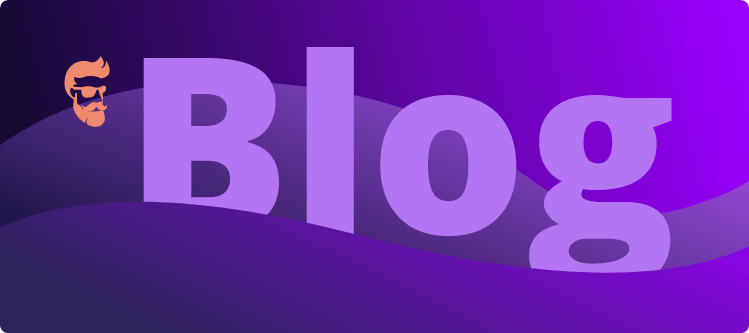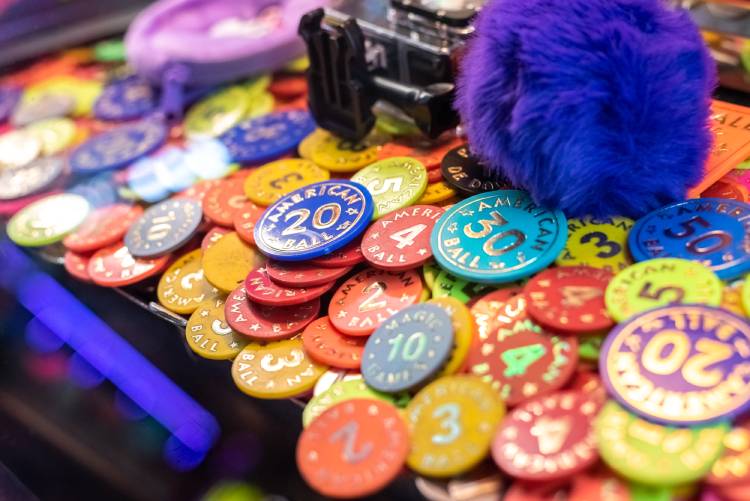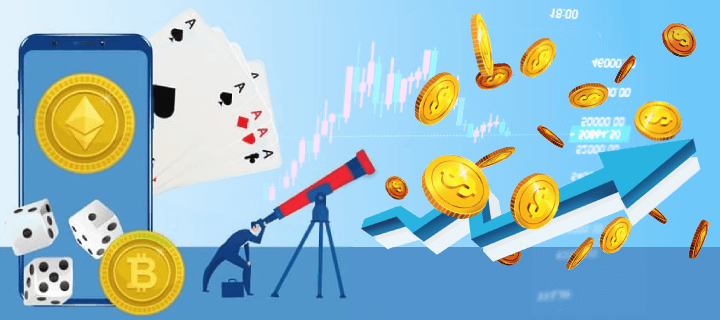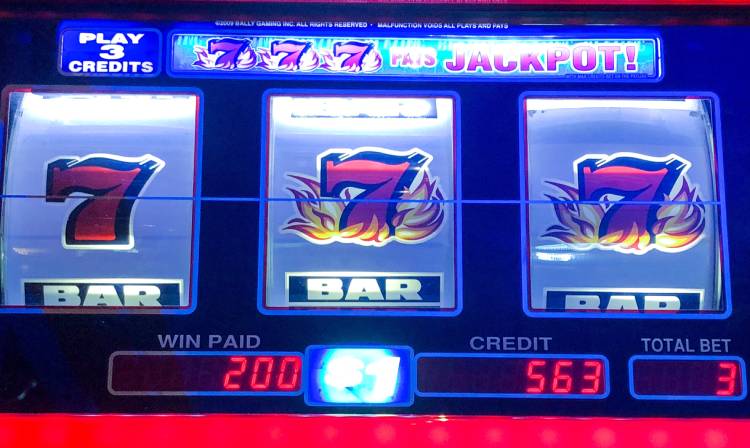Are Poker Huds Legal? | How Do Poker Players Get Tracked?

Over the last decade or so years, tracking poker opponents has become commonplace. During that time, the legality of poker heads-up displays (HUDs) was widely disputed. I’ve played on almost every poker site and used dozens of different HUDs, so I can offer you an authoritative response.
Is it allowed to use a poker HUD? Nearly all online poker sites allow the use of heads-up displays, or HUDs. However, there has been a recent trend in the business to limit their use. In most cases, a poker site’s terms of service will state their policy on HUDs on its website.
Since roughly 2003, third-party software that tracks players has had a significant impact on the game. I’ve done a lot of study on the topic and will tell you everything you need to know about how HUDs work and what their benefits and drawbacks are.
What Is a Poker Hud, Exactly?
“HUD” is an acronym for “Heads-Up Display.” A Poker HUD is a visual that displays statistics in a box or grid in close proximity to an opponent. The statistics show how frequently the opponent’s poker activities occur. The person using the HUD has the option of displaying whatever statistics they like.
The following are the most typical statistics displayed in a poker HUD:
- VPIP stands for “Voluntarily Put (Money) In Pot,” and it indicates how frequently opponents choose to play pots. Unskilled players are usually identified by high frequencies of 40% or more.
- PFR stands for “Pre Flop Raise,” and it measures how frequently an opponent raises before the flop when they do commit money. When combined with VPIP, this measure is used to generate educated estimations about the range of hands an opponent is holding when they raise. A low PFR of less than 10 combined with a high VPIP indicates a weak player.
- AGG percent – “Aggression Frequency” indicates how often an opponent takes aggressive activities following the flop as opposed to passive ones. Aggression frequency is usually 30 percent or lower for passive players, and 40 percent or greater for aggressive ones.
- Fold to C-Bet and C-Bet to C-Bet and C-Bet C-Bet — These statistics show how often a player makes continuation bets after the flop and how often they fold to continuation bets.
Example of a Simple HUD
(VPIP/PFR/AGG%*# of Hands Collected)
Positional metrics for a Maniac in Hold’em Manager (VPIP/PFR/AGG percent *# of Hands Collected) Example of a Simple HUD
Hundreds of more detailed stats are typically accessible for use in a HUD.
Must Read: Poker Rate Explained
What is the Origin of a Poker HUD?
A third-party poker tracking software package is required in order to use a HUD at the poker tables.
Essentially, the software collects and processes hand histories while you play. The information gathered is then used to create the heads-up display on your table.
Who Uses Head-Up Displays (HUDs) and Why?
HUDs are now widely used in online poker. Many recreational players have a heads-up display on their tables, despite the fact that they often have little understanding of how to use the information efficiently.
These statistics, on the other hand, can be utilized to profile and pick opponents apart with accuracy in the hands of a talented amateur or professional player. Even though everyone may utilize a HUD, it is true that their popularity favors the studious.
HUDs have enabled expert players to do the following:
- Exploit opponents more effectively than they would be able to otherwise.
- They should look for leaks in their own games and take actions to fix them.
- Play a huge number of tables at once without needing to keep a close eye on the activity.
Ambitious players are compelled to use a head-up display (HUD).
The widespread use of HUDs has given individuals who use them a significant advantage over those who do not. This characteristic forces players who might otherwise avoid the practise to participate in.
In other words, either learn to use a HUD (and do so well), or you’ll be at the mercy of the other players (regs). People have gotten very proficient at creating HUDs that can detect an opponent’s leaks in subtle but significant ways.
In fact, it’s practically become an arms competition to see who can detect the opposition’s leaks first. A whole generation of poker players would be absolutely lost if they were forced to play without a HUD.
Must Read: How Much To Invest In Poker
What HUDs are available in tracking software programmes?
Hold’em Manager (HEM) and PokerTracker are the two most popular software packages with a HUD function (PT). Despite the fact that these are currently different software applications, the two firms that created them amalgamated in 2014. It’s unknown whether or not one of the versions will be phased out.
HEM and PT both include complex HUDs that can show you what another player is doing across numerous streets in great detail. If you only need basic statistics, though, there is a tool called Hold’em Indicator.
How the HUDs appear
The Hold’em Indicator HUD (seen on the LT) displays all of the fundamental facts, but HEM and PT allow you to completely design a HUD to display whatever information you wish about another player.
How to Create a Poker Heads-Up Display
Even the use of legal poker tracking software has made it more difficult to win.
There’s a lot of irony in the phrase “game improvement software,” because it really makes it harder to win. The near-universal use of tools that allow for in-depth statistical analysis and HUDs has sparked a lot of laughter among the regs. However, this statistical “arms race” has unexpected consequences.
The Poker Economy is Hurt by Heads-Up Displays (HUDs).
Hyper-analysis of opponents, in my opinion, has resulted in an unfair playing environment.
There is now a significant divide between so-called good players and casual part-time players. Unskilled players lose money faster, hence there are fewer of them in the games.
Many poker sites have devolved into a fight to see who can gain enough money from the few incompetent players to scrape out a sliver of a win rate.
Furthermore, practically every recreational player is aware that “the pros” employ tracking software. They can even consider it a sort of cheating. As “fun” players abandon the games or migrate to more recreational-friendly poker sites, many poker sites are fast becoming a fish desert.
When almost no one can win, no one wins. Literally.
They Went a Little Too Far
Basic HUD use, in my opinion, is beneficial to the game and should be available to everyone. There’s no harm in it as long as the knowledge is something that can be collected by watchful players anyway.
The tracking software businesses, on the other hand, went a little too far with it.
It’s a little crazy to be able to evaluate exactly what an opponent did on the river over the last 500,000 hands.
Auto-Rate and Badges Have Arrived
The biggest tracking software providers have two features that allow opponents to be further exploited:
- Auto-Rating is a symbol system that is allocated to a player based on one or more significant statistics, allowing them to be pigeonholed depending on their habits. This allows a player to devise unique methods for assaulting the various categories of players. Phil Hellmuth is noted for classifying players. In 2003, there was also a well-known 2+2 post on the subject.
- NoteCaddy Badges are automated notes that are summarised based on typically complex statistical computations. They enable a player to detect when an opponent is playing imbalanced or unprofitably in specific situations. The more precise the badges become, the larger the hand sample you have on an opponent.
A Few Badges for Notecaddy
The good news is that most badges require a large database of hands before they can be used. The bad news is that access to large datasets can be obtained in an unequal manner.
Data-mining Was it the end of the world?
You’re only meant to be allowed to have stats that you’ve gathered from your own observations. There are, however, websites that collect and sell hand histories to anyone who is ready to pay for them.
Despite the fact that all major poker sites prohibit this, unethical players continue to engage in the activity.
Hardcore gamers can have tens of thousands of hand histories on players with whom they have never played a single hand as a result of data-mining. As a result, unsuspecting players are picked apart.
Sharkscope
It’s important to note that cash game players aren’t the only ones who have to worry about unscrupulous actors unfairly targeting them. For years, there has also been a tracking site dedicated to sit and go gamers.
Sharkscope now includes a HUD with metrics similar to those seen on HEM and PT, allowing you to see extensive won/lost histories from opponents. Most poker metrics prohibit the use of these numbers because they are derived in an unfair manner. Unfortunately, this does not prevent players from continuing to use them.
Why Do Some Poker Sites Allow Hud Use?
Why aren’t HUDs prohibited by every site if they actually harm the poker economy and, as a result, the viability of a poker site? There are two reasons for this:
- Without a HUD, multi-tabling players who play 6, 10, or even 24 tables would quickly get disoriented. They make quick decisions based on the information provided by the HUD. Sites don’t want to lose these devoted users who can’t live without their HUD.
- These high-volume players make a lot of rake, therefore poker companies are hesitant to put any restrictions on them.
The Reluctance to Allow Huds in Recent Years
While some poker sites have decided to disregard the issue of a failing poker economy, others have adopted a different approach to player protection.
Model for Recreational Use
A new generation of poker sites has emerged that has made steps to make the game safer for participants. They’ve done it in a few different ways:
- Long-term tracking of participants has become hard because to anonymous games. On anonymous poker sites, a session HUD is typically still feasible, either through Hold’em Indicator or a hand history converter.
- Quick Seating is a feature that immediately fills tables without requiring players to select a table. Strong players’ ability to seek out and target recreational opponents is hampered as a result. The result is a more balanced environment at the table, with roughly equal numbers of strong, middle, and weak players. This causes the bad players to lose money more slowly.
- Limited Hand Histories is a feature used by recreational poker sites like Global Poker to keep games non-anonymous while still prohibiting the use of HUDs. This strategy, however, has not shown to be as beneficial as remaining anonymous. Regardless, I’ve heard of gamers discovering ways to have HUDs on their tables.
- Smaller Player Rewards, such as no rakeback or a lucrative VIP programme, prevent professionals from ever visiting the poker site. With fewer sharks, the poker economy as a whole is more stable, and money isn’t merely rushing to the top of the food chain.
The Win-Rate Is the Proof
I’ve played on two of the most popular recreational poker sites, and I’ve noticed a significant variation in my win rate.
Here’s an example of a recent game played on two different poker sites.
- The first screenshot is from America’s Cardroom, a popular conventional poker site that still enables full usage of the HUD. I was able to win, however my win rate (only 3.42bb/100) across the rather tiny sample size was not particularly outstanding.
- The second image is from Ignition Poker, a prominent social gaming service with anonymous play.
I was testing some of my poker charts that I had been working on for years in the samples, but I was far from playing my best game. On Ignition, on the other hand, I was able to pretty much crush it (for 8.62bb/10) across all stakes. It was difficult to even beat the micro-stakes on ACR.
Sites for Playing Poker for Fun
If you want to play somewhere where you don’t have to worry about other players knowing anything about your game, I recommend checking out the sites listed below.
Sites with limited use of the HUD
| Poker Site | HUD Usage | Anonymous Games | Hand Histories |
| Ignition Poker | Session Stats | Yes | After 24 hrs |
| Global Poker | None | No | Never |
| Unibet | None | No | Never |
Ignition Poker is a good option for US players. Unibet is a fantastic alternative for anybody else in the world.
Sites to Play Traditional Poker
If you enjoy digging into stats and don’t mind other people doing the same, there are a few sites you should check out.
Sites that allow you to use the HUD indefinitely
| Poker Site | HUD Usage | Notecaddy | Hand Histories |
| Black Chip Poker | Yes | Yes | Instant |
| BetOnline | Yes | No | Card Catcher |
| 888 Poker | Yes | Yes | Instant |
| Winner Poker | Yes | Yes | Instant |
I recommend BetOnline or Sportsbetting Poker if you want a good mix of soft games and full HUD use (same network). To collect hand histories, you’ll need to utilize a card catcher, but it’s definitely worth the minor investment.
HUDs in Poker: A Brief History
While PokerTracker was first introduced in 2001, the true game-changing moment did not occur until 2003.
The “PokerAce” HUD was incorporated as the first commercially viable HUD when PokerTracker 2 was released.
HUD Use in Its “Golden” Era
For the next few years, the general public was unaware of the existence of this programme. Serious gamers and professionals were raking in the cash by having a large informational advantage over their opponents.
Hold’em Indicator, on the other hand, was published in 2006. It had a lot more user-friendly feel to it, and it came with a handy odds calculator built right in. The primitive HUD was included as a bonus and helped to level the playing field.
Hold’em Manager was released in 2007 and took things even farther. More detailed stats were introduced later, as well as more complex techniques of tracking participants. Poker nerds were in ecstasy with auto-rating and subsequently Notecaddy. Choosing a table and identifying weak players became a breeze.
The Declination
Today, it appears that the use of tracking software and HUDs in their current form is on the decline. There hasn’t been a big release or upgrade in several years.
My advice to them is to take Javaro’s approach and simplify things by working directly with sites to adapt to the evolving poker landscape. I believe that players should be able to conduct in-depth statistical analysis on their own games, but that unethical exploitation of lesser opponents should be limited and discouraged.
Last Thoughts
The first 15 years or so of internet poker have been a roller coaster. The introduction of player tracking systems has had a significant impact on how poker sites operate today.
As with anything, there is a constant debate about what a poker player’s experience should be like. We’re currently working to provide more balance and enjoyment for all gamers.
I’m hoping that this approach attracts more participants to the game and ensures that online poker’s sustainability continues indefinitely.
I made a complete tutorial on poker strategy if you want to learn more. Thank you for taking the time to read this!
Related Questions
As a live player, how can I keep track of my stats? For both Android and Apple, there are a number of apps available. Poker Bankroll Tracker is my favorite and the one I’m now using.
What is the difference between VPIP and PFR? The two most prevalent stats in a player’s Heads-Up-Display, or HUD, are VPIP and PFR. PFR stands for “Pre-FlopRaise” and VPIP is for “Voluntarily Put In Pot.”
What is the average percentage of a continuation bet? The percentages of continuation bets often range from 40% to 90%. The average of all players in my Hold’em Manager database, on the other hand, is 59.6 percent.





